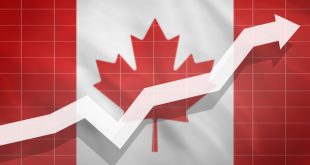The robust U.S. jobs report for June, released on July 3, 2025, has upended expectations for a Federal Reserve rate cut this summer, strengthening the case for maintaining high interest rates. The data, coupled with political pressure from President Donald Trump on Federal Reserve Chair Jerome Powell, has sparked market volatility and heightened scrutiny of monetary policy. This article argues that the Fed’s likely decision to hold rates steady, driven by a resilient job market, risks intensifying political tensions and market uncertainty, necessitating clear communication from Powell to maintain stability.
Robust Jobs Data Shifts Fed Expectations
The U.S. economy added 147,000 jobs in June, exceeding expectations of 110,000, with May’s payrolls revised upward to 144,000. The unemployment rate fell unexpectedly to 4.1% from 4.2%. This strength prompted markets to slash the odds of a 25-basis-point rate cut in July from 23.8% to 6.7%, while a September cut remains likely at 71%. The 10-year Treasury yield rose four basis points to 4.34%, and the 2-year Treasury yield, sensitive to Fed policy, jumped nine basis points to 3.88%. These figures signal a robust economy, reducing the urgency for rate cuts as inflation remains above the Fed’s 2% target.
Political Pressure on Powell Intensifies
President Trump has escalated his criticism of Powell, posting on Truth Social that the Fed chair, whom he nicknamed “Too Late,” should resign for not cutting rates sooner. Trump’s remarks followed a post by FHFA Director William Pulte, who called for a congressional investigation into Powell’s high-rate policies, which Pulte claims harm the housing market, with 30-year mortgage rates at 6.77%. Powell, however, has signaled a commitment to holding rates steady to monitor inflation and potential tariff impacts, emphasizing the Fed’s independence. Political pressure may backfire, as Powell appears focused on safeguarding his legacy and the Fed’s autonomy, potentially making rate cuts less likely in the near term.
Market Reactions and Economic Implications
The jobs data triggered mixed market responses. Stocks edged higher, with the S&P 500 reaching an intraday record of 6,271, but dimmed rate-cut hopes capped gains. Bond markets saw sharper movements, with rising yields reflecting expectations of sustained high rates. The strong labor market suggests businesses remain unfazed by tariff uncertainties, supporting the Fed’s wait-and-see approach. However, persistent high rates could strain sectors like housing, as mortgage rates remain elevated, potentially fueling further political friction.
What’s Next?
The Fed’s likely decision to hold rates in July, driven by strong employment and sticky inflation, underscores the need for Powell to communicate a clear strategy to markets and policymakers. Trump’s vocal criticism risks undermining confidence, but Powell’s resolve to prioritize data over politics could stabilize expectations. To mitigate market volatility, the Fed outlines conditions for future rate adjustments, while the administration must temper its rhetoric to avoid escalating tensions. With global markets already jittery from geopolitical risks, coordinated clarity from monetary and fiscal authorities is critical to sustaining economic stability.
 Noor Trends News, Technical Analysis, Educational Tools and Recommendations
Noor Trends News, Technical Analysis, Educational Tools and Recommendations





